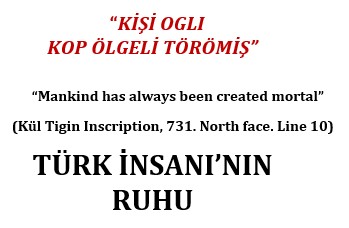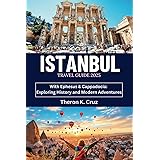Person, Life and Death. The blue sky above and the rainy ground below were made, and human beings were made between them. Bilge Kagan Inscription. God lives time. Mankind has always been born to die. Kul Tigin (684-731) Inscription. As a result of the literature review on Turkish people, it has been seen that the concept of person, which is different and more inclusive than the concept of human, includes the concepts of life, death, creation and the afterlife. The main concepts have been identified.
Kiş, which is the root of the person used in the sense of human in Old Turkish, was used in the sense of sable and quiver. The Siberian swamp otter may have been instrumental in coining the term Kishioglu. It seems possible to establish a connection between the person denoting the swamp otter and the person denoting human. Kis must have been derived from the similarity between the reed area near the waters where the sables live and the people living in a forest with plenty of water, and from quiche the person must have been derived. Thus, the living space became the origin of the term human. The fact that forests and rivers are among the defining characteristics of the settlement or homeland among the Göktürks strengthens this connection. In addition, the fact that the origin myths are directly or indirectly related to water strengthens the idea that man is of water origin.
The root of the word “person”, which means human in Turks, is water. However, the word human, which is used as the equivalent of the term human in the West, is of Latin, Indo-European origin and is associated with the land. The soil is stable and serene, while the water is fluid and changeable. The Turks developed their human philosophies within the framework of their conception of the universe during their life in the swamps of Siberia in Asia. They expressed the human being with the concept of Person, which includes life and death together. The concept of person was much more universal and inclusive than the concept of human.
We first see the concept in the inscriptions of Yenisey, Altay, Tonyukuk, Bilge Kagan and Kultigin, and then in the first Turkish book, Kutadgu Bilig. The concept of the person was so universally inclusive that it constituted the cornerstone of the Turkish society and state structures, world-state ideals and their visions of the next world.
The values of the Turkish people are kneaded in the geographies of Greater Asia and Asia Minor. Starting from epics and tombstones and then inscriptions, people and their values were elaborated until the first written Turkish book, Kutadgu Bilig. The Turks, who entered Asia Minor in the 11th century, encountered a ten-thousand-year-old cultural tradition here. Even two centuries after their arrival, they revealed a transcendent value like Yunus Emre.
When the thousands of years of experience in Greater Asia was transferred to Anatolia via Transoxiana and Khorasan, the same conceptual framework continued. The place where the aforementioned accumulation is expressed the highest is the lands of Eskişehir where Yunus Emre lives. It is the same understanding of humanity that was carried from the swamps of Siberia to the Sakarya River. It is expressed in Yunus with an uninterrupted continuity.
The unique cultural accumulation and human diversity brought by the 10,000-year-old settlement in the geography of Asia Minor gained a universal synthesis with the arrival of the Turks on the peninsula. The concept of personality is much more genuine than Humanity, which does not yet exist, and Transhumanism, which is still in the design phase. While a person is in the process of being chipped away, the personality is permanent, the essence.






















